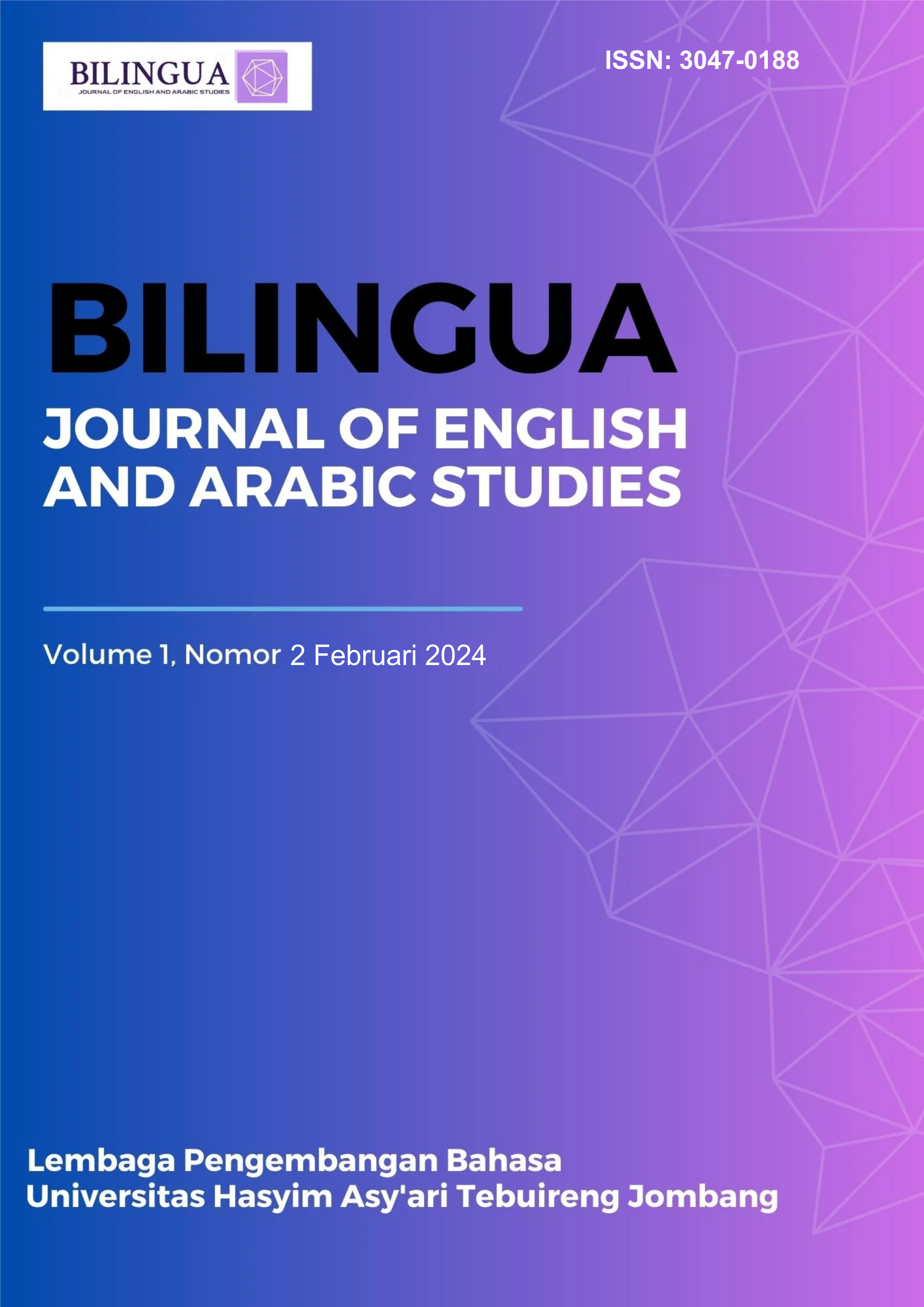A Practical Pocket Dictionary for Indonesian Students: Understanding Biological Scientific Terms in English
DOI:
https://doi.org/10.33752/bilingua.v1i2.6766Keywords:
Science Education , Biological Terms , Junior High School , Language LearningAbstract
This article outlines the development of a bilingual pocket dictionary specifically designed for Indonesian junior high school students to aid in learning biological scientific terms in English. Using a descriptive research approach, the dictionary was crafted from English terms extracted from widely used junior high school natural science textbooks. These terms were translated into Indonesian and provided with clear, concise bilingual definitions. To enhance understanding, simple illustrations and example sentences were included. The dictionary is designed to be compact and user-friendly, making it a practical tool for students to carry and use as a reference. By addressing the linguistic barriers in learning biology, this dictionary not only simplifies the learning process but also promotes scientific literacy and bilingual proficiency. This project represents a critical step in supporting science education in Indonesia, providing a resource that bridges the gap between complex scientific vocabulary and students' language skills.
Downloads
References
Afningsih, N. (2018). Model Pembelajaran Problem Posing untuk Mengatasi Kesulitan Belajar Mahasiswa Berbahasa Inggris Bidang Ekonomi dalam Mempersiapkan Enteprenuer Handal. Jurnal Penelitian Pendidikan Bahasa Dan Sastra, 3(2), 337–343.
Alfiyati. (2008). Focus Group Discussion (Diskusi Kelompok Terfokus) sebagai Metode pengumpulan Data Penelitian Kualitatif. Jurnal Keperawatan Indonesia, 12(1), 58–62.
Alwi, M.A. & Indrawan, F. (2023). The Use of Cohesive Devices in Theses Abstracts Written by Undergraduate Students of English Department. BILINGUA, 1(01), 1–8. Retrieved from https://ejournal.unhasy.ac.id/index.php/bilingua/article/view/4773
Dewi Kustanti. (2016). Kesulita dan Solusi Pembelajaran English Reading Text. Al-Tsaqah, 13(1), 85–98. Hadi, S. (2017). Upaya Meningkatkan Daya Simak dalam Keterampilan Menyimak Interaktif Berbahasa. Jurnal Riset Dan Konseptual, 2(2), 163–177.
Gilissen, M. G., Knippels, M. C. P., & van Joolingen, W. R. (2021). Fostering students’ understanding of complex biological systems. CBE—Life Sciences Education, 20(3), ar37.
Indrawan, F., Daristin, P. E., & Laili, E. N. (2023). The Influence of Duolingo Application to EFL Classroom Students’ Motivation in Learning English. Journey: Journal of English Language and Pedagogy, 6(3), 626-633. https://doi.org/10.33503/journey.v6i3.3695
Kusuma, C. S. D. (2019). Integrasi bahasa Inggris dalam Proses Pembelajaran. Efisiensi - Kajian Ilmu Administrasi, 15(2), 43–50. Megawati, F. (2016). Kesulitan Mahasiswa dalam Mencapai Pembelajaran Bahasa Inggris Secara Efektif. Jurnal Paedagogia, 5(2), 147–15.
Ramírez-Castañeda, V. (2020). Disadvantages in preparing and publishing scientific papers caused by the dominance of the English language in science: The case of Colombian researchers in biological sciences. PloS one, 15(9), e0238372.
Sari, L., & Lestari, Z. (2019). Meningkatkan Kemampuan Berbicara Bahasa Inggris Siswa dalam Menghadapi Era Revolusi. Seminar Nasional Pendidikan, 12(1), 443–453
Schmidt, T., & Strasser, T. (2022). Artificial intelligence in foreign language learning and teaching: a CALL for intelligent practice. Anglistik: International Journal of English Studies, 33(1), 165-184.
Syahputra, I. (2014). Strategi Pembelajaran Bahasa Inggris sebagai Bahasa Aasing dalam Meningkatkan Kemampuan Berbahasa Siswa. Penelitian Sosial Keagamaan, 17(1), 127–145.













